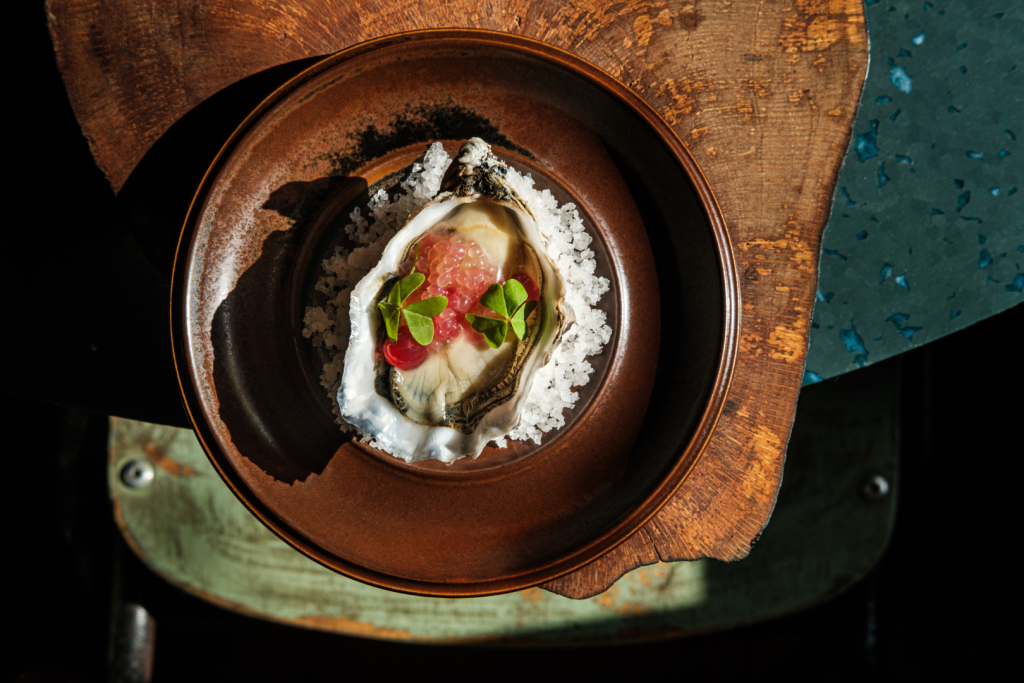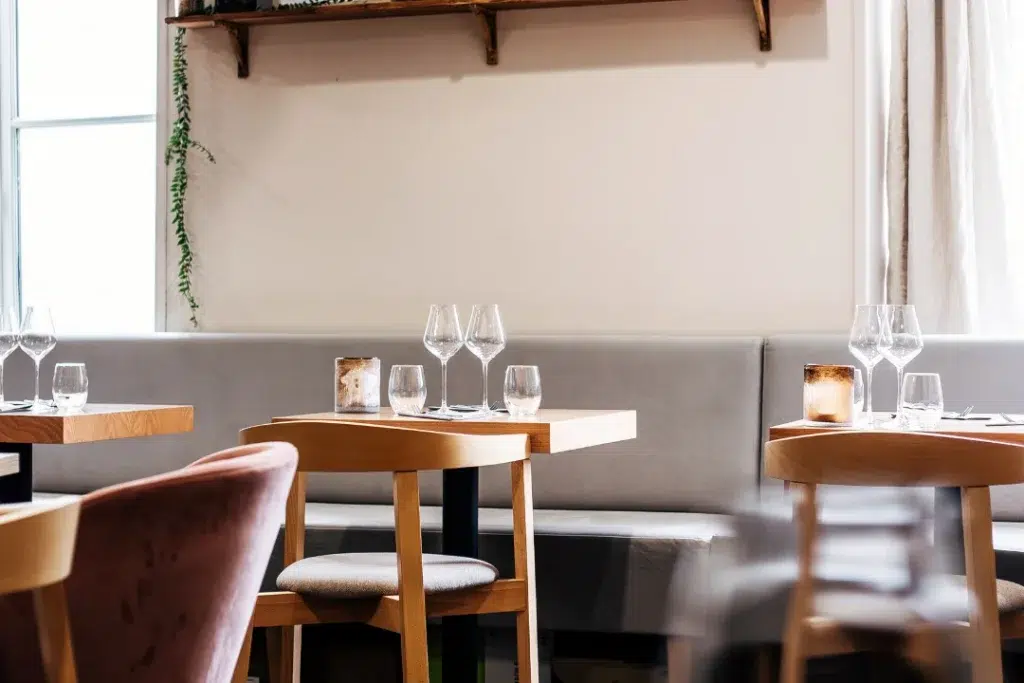Dining has always been a reflection of culture, lifestyle, and social habits. Traditionally, dining experiences were split into two distinct categories: casual dining, which emphasizes affordability and comfort, and fine dining, which is characterized by luxury, meticulous service, and a strict adherence to culinary excellence. However, in recent years, a new category has emerged that blurs the lines between these two experiences—elevated casual dining.
Also known as fine casual restaurants or elevated bistro dining, this concept bridges the gap between high-end cuisine and a more relaxed, approachable atmosphere. It delivers chef-driven, high-quality food but without the rigid formality, high prices, or exclusivity that often accompany traditional gastronomic venues. Instead, it offers an elevated culinary experience in a setting that is both stylish and comfortable.
The rise of this hybrid dining model is no coincidence. Consumers today seek quality and authenticity without necessarily wanting to adhere to the sometimes intimidating rules of fine dining. With busy schedules, a focus on experiences over extravagance, and an increasing appreciation for thoughtfully crafted food, many diners find this contemporary dining style to be the perfect middle ground.
1. Understanding Casual Fine Dining
This hybrid dining concept blends elements of both relaxed and high-end gastronomy. While it maintains the high culinary standards of fine restaurants, it eliminates many of the barriers that make traditional upscale venues less accessible.
Definition and Alternative Names
This modern dining trend goes by several names, including fine casual cuisine and fast gourmet dining. These terms highlight the concept’s focus on maintaining high food and service standards while ensuring a more relaxed and accessible experience.
Unlike fast food or standard laid-back eateries, this refined dining approach emphasizes fresh, high-quality ingredients, creative menus, and an elevated service style. At the same time, it sheds the rigid structure of high-end dining by eliminating strict dress codes, excessive formality, and often, the necessity for reservations far in advance.
How It Differs from Traditional Fine Dining and Casual Dining
- Fine Dining: Typically characterized by multi-course meals, white-tablecloth service, an extensive wine list, and high prices. Casual fine dining offers similar culinary quality but in a less formal setting.
- Casual Dining: More affordable and accessible but often lacks the culinary sophistication and personalized service found in fine dining. Casual fine dining enhances this by offering gourmet food without the intimidation factor.
The Shift in Consumer Preferences
The emergence of modern upscale dining is largely driven by changing consumer preferences. Modern diners, particularly younger generations, prioritize:
- Quality over tradition – They seek memorable dining experiences that focus on creativity and innovation rather than strict etiquette.
- Approachability – Guests want high-end food in a welcoming and relaxed setting.
- Efficiency without sacrificing quality – Many casual fine dining restaurants incorporate streamlined service models that cater to busy lifestyles.
This culinary evolution is more than just a trend; it reflects the evolving relationship between consumers and the food industry. By combining the best of both worlds, it has positioned itself as a modern, inclusive, and experience-driven way to enjoy great food.
Key Characteristics of Casual Fine Dining
The concept balances sophistication with comfort, offering an elevated experience without the constraints of traditional fine dining. This section explores the essential characteristics that define this unique dining style.
Atmosphere
Casual fine dining restaurants create a relaxed yet upscale ambiance. While they embrace elegance and refinement, they avoid the rigid formality of traditional upper class cuisine. The interior design often features modern aesthetics, warm lighting, and stylish yet comfortable seating, ensuring that guests feel both welcomed and indulged.
Unlike classic fine dining establishments that may feel exclusive or intimidating, the new concept venues focus on approachability—offering a high-end experience in an environment that encourages social interaction and enjoyment.
Menu & Cuisine
At the heart of casual fine dining is chef-driven, high-quality cuisine. These restaurants prioritize seasonal, fresh ingredients and often incorporate creative, globally inspired dishes that showcase culinary expertise.
Menus are more refined than those of casual restaurants but are presented in an accessible manner. Unlike the multi-course rigidity of fine dining, casual fine dining allows for a la carte options and a more flexible approach to ordering. The emphasis is on bold flavors, high-quality ingredients, and artistic presentation, without excessive complexity.
Service Style
The service strikes a balance between attentiveness and approachability. Staff members are well-trained and knowledgeable about the menu, capable of offering recommendations and pairing suggestions, yet they interact with guests in a way that feels natural and inviting rather than overly formal.
Diners can expect efficient, friendly, and personalized service, free from the rigid, almost ceremonial approach found in fine dining. This balance ensures a seamless yet enjoyable experience, where guests feel valued but not pressured by traditional etiquette rules.
Pricing
One of the key appeals is its mid-range pricing, which falls between casual and fine dining. While the focus remains on high-quality food, the cost is more accessible to a broader audience.
Diners get to experience gourmet meals at a fraction of fine dining prices, making high-end cuisine more inclusive. This pricing model attracts both food enthusiasts looking for a premium experience and everyday diners who want to treat themselves without breaking the bank.
Dress Code
Unlike traditional fine dining, where formal attire is often required, casual fine dining eliminates strict dress codes. Patrons can enjoy a high-quality meal in a comfortable, stylish, yet relaxed setting without the pressure of dressing up excessively.
This flexibility makes casual fine dining more appealing to a modern audience, where guests want to focus on the culinary experience rather than adhering to a dress standard.

The Benefits of Casual Fine Dining
Accessibility
By removing many of the barriers of fine dining—such as high costs, strict reservations, and formalities—casual fine dining makes gourmet experiences available to a wider range of customers. It allows more people to explore high-quality, innovative cuisine without feeling out of place.
Family-Friendly
Unlike traditional fine dining, which may feel unwelcoming to families, casual fine dining offers a more inclusive atmosphere. Many establishments accommodate families, allowing parents to enjoy high-end food while dining with children in a setting that is both elegant and comfortable.
Convenience
Casual fine dining blends the efficiency of casual dining with the quality of fine dining. Whether it’s quicker service, a streamlined ordering process, or a less time-consuming experience overall, these restaurants cater to busy lifestyles while still delivering an elevated meal.
Culinary Innovation
Chefs in casual fine dining establishments often have greater creative freedom compared to traditional fine dining. Without the constraints of rigid menus or extensive multi-course meals, they can experiment with bold flavors, seasonal ingredients, and modern techniques, resulting in exciting and unique dishes that keep customers coming back.
Casual fine dining represents a modern approach to dining—one that prioritizes quality, comfort, and accessibility. It meets the evolving expectations of today’s diners, offering a refined yet relaxed culinary experience that continues to grow in popularity.
Why Casual Fine Dining is Gaining Popularity
Casual fine dining has rapidly grown in popularity, driven by changing consumer expectations and shifts in the restaurant industry. Today’s diners seek quality, experience, and accessibility, and this dining style perfectly aligns with their evolving needs.
Changing Dining Habits and Consumer Expectations
Modern diners no longer view fine dining as the exclusive domain of special occasions. Instead, they want high-quality food more frequently, without the need for elaborate dress codes, extensive reservations, or multi-hour meals. People are looking for memorable dining experiences that are both refined and approachable.
Additionally, the rise of social media and food culture has encouraged more people to explore high-end dining in a relaxed setting. Restaurants that offer Instagram-worthy dishes, engaging experiences, and a welcoming atmosphere tend to attract a broader audience.
The Desire for High-Quality Food Without the Formality and Cost
While traditional fine dining is often seen as intimidating, exclusive, and expensive, casual fine dining makes exceptional cuisine more accessible. Customers want the flavors, creativity, and presentation of gourmet meals without the rigid etiquette or the high price tag.
Casual fine dining delivers on this demand by:
- Providing chef-driven, high-end cuisine at a more affordable price point.
- Offering top-tier service in a way that feels warm, inviting, and personal rather than overly formal.
- Creating an elegant yet relaxed dining environment, making high-end food experiences more enjoyable for everyday occasions.
The Impact of the Restaurant Industry’s Evolution on Dining Trends
The restaurant industry has undergone significant transformations in response to consumer behavior. Factors such as:
- The rise of fast-casual restaurants, which proved that people value speed and efficiency while still expecting quality food.
- The increasing demand for authenticity, where customers want to connect with chefs, ingredients, and the story behind their meals.
- The influence of global culinary trends, which encourage chefs to experiment with bold flavors and innovative techniques outside of traditional fine dining constraints.
Refined casual dining strikes the perfect balance—offering impeccable food, creative presentation, and excellent service while catering to modern expectations of convenience and comfort.
This contemporary dining style represents a modern evolution in the culinary landscape, catering to diners who crave high-quality food without the rigid rules and steep prices of traditional fine dining. By blending refinement with approachability, it provides a memorable and enjoyable experience that appeals to a wide audience.
The future of elevated casual dining looks bright, as more restaurants embrace innovative service models, flexible pricing, and creative culinary offerings. As dining habits continue to shift, this modern approach to fine dining is well-positioned to grow and redefine the way people experience gourmet food—making exceptional cuisine more accessible, welcoming, and exciting than ever before.
FAQ: Casual Fine Dining
Casual fine dining is a hybrid restaurant concept that combines the high-quality cuisine and service of fine dining with the relaxed atmosphere and accessibility of casual dining. It allows diners to enjoy gourmet meals in a welcoming, comfortable setting without strict dress codes or excessive formality.
Unlike traditional fine dining, casual fine dining:
Has a more relaxed and approachable ambiance.
Does not require formal attire or strict etiquette.
Offers top-tier cuisine but at a more affordable price point.
Provides attentive yet friendly service, without rigid rules.
Casual fine dining is more affordable than traditional fine dining but slightly higher in price than casual dining. It sits in a mid-range price bracket, making gourmet food more accessible while still maintaining high quality and exceptional presentation.
Most casual fine dining restaurants do not enforce strict dress codes. While guests are encouraged to dress neatly and stylishly, there is no requirement for formal wear, making it a more flexible and comfortable dining experience.
Casual fine dining is growing in popularity because it offers the best of both worlds—high-end cuisine without the formality and cost of traditional fine dining. Consumers today prefer quality, convenience, and experience-driven dining, making this concept a perfect fit for modern tastes and lifestyles.

